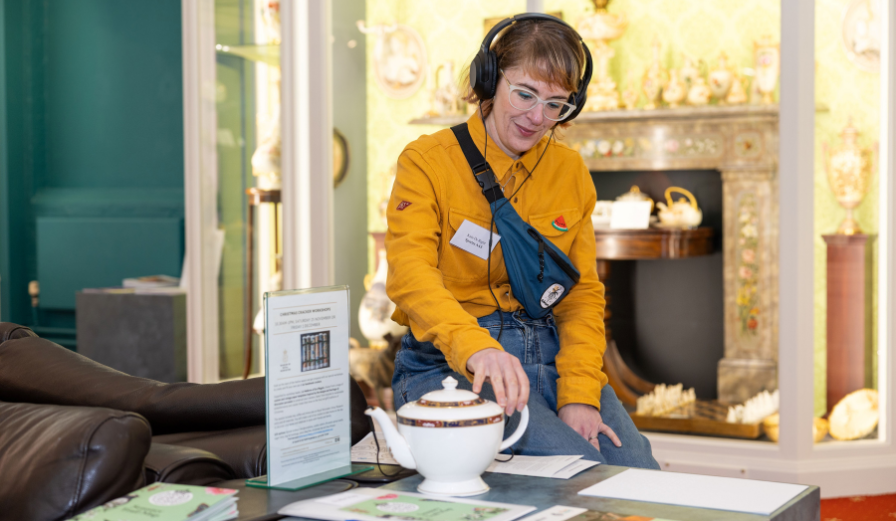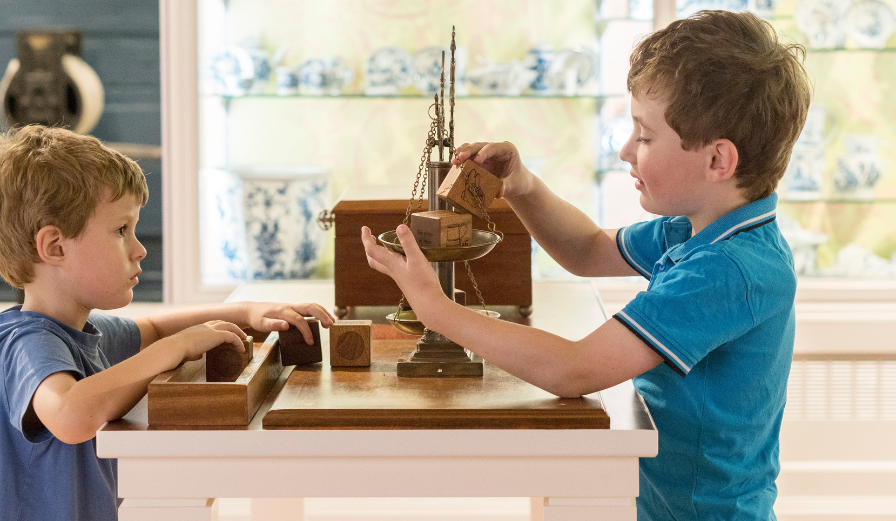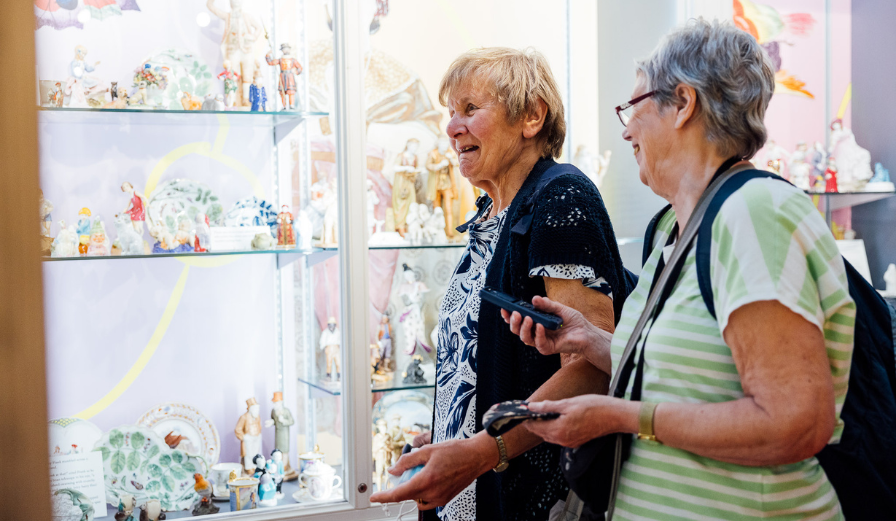Home to the world’s largest collection of Worcester porcelain, the museum brings over 250 years of ceramic heritage to life through stories of artistry, innovation, and everyday use. From sensory trails and Braille labels to community outreach in care homes and youth centres, the museum is reimagining how it connects with people. Read on to explore how this transformation is making a lasting impact.
How would you describe the Museum of Royal Worcester to visitors who may not be aware of you?
At the Museum of Royal Worcester, visitors can discover 250 years of colourful stories through the world's largest collection of Worcester porcelain and our unique archive, all in the place where it was made. Porcelain and ceramic wares were produced in Worcester from 1751 until the closure of the Royal Worcester factory in 2009.
Visitors can discover our showstopper pots in stunning colourful galleries. They can explore the sounds, smell and feel of porcelain in our Sensory Trail, and get hands-on with creative fun for all ages in our Pottery Painting studio. It’s a perfect day out for family and friends.
What motivated you to improve accessibility at the Museum of Royal Worcester?
Our regular visitors to the museum are those who are already aware of Royal Worcester, its objects and histories, and are visiting to further their educational and personal interests. We wanted to improve this by welcoming more visitors who may have never heard of Royal Worcester before, or for those who may feel that a museum is only a place for those from certain educational backgrounds. We want to make our museum a space for all ages, backgrounds and abilities.
What changes have you made at the Museum of Royal Worcester to make it more accessible and inclusive?
Family Friendly Spaces
In 2017, we introduced a dedicated Family Area, designed to make visits more enjoyable for children and carers. The space includes a comfy sofa and picture books, encouraging families to relax, read, and engage with the museum's collection together.
We also provide comfortable seating throughout our spacious galleries on both floors, supporting the needs of visitors who may need to rest during their visit.
Audio Guides for Hearing and Visually Impaired Visitors
To support visitors with hearing impairments, our audio guide is compatible with both hearing loops and silent headphones. Visitors can activate the loop by switching their hearing aids to the ‘T’ setting. Hearing dogs are also warmly welcomed.
For visually impaired visitors, the audio guide includes detailed descriptions of many exhibits, including the history and manufacturing process behind them. While most display items cannot be handled, we offer bookable tactile sessions with a member of staff, where selected objects from the collection can be explored by touch. Please contact us in advance to arrange this. Guide dogs are welcome throughout the museum

Visual Support: Large-Scale Imagery
We display large-scale images of early porcelain designs for visitors who are unable to fully see or enjoy the detail on original pieces due to visual impairment or poor eyesight. This ensures everyone can appreciate the beauty and intricacy of the designs.
Interactive Learning and Engagement
Our interactive tables provide a hands-on way to explore the evolution of porcelain. Visitors can:
- Compare the density and thickness of porcelain over time
- Understand the historical value of porcelain relative to everyday costs (e.g. a house, shoes, meals)
- Create their own plate design using patterns from the museum’s archive
These activities offer a rich, multisensory learning experience for all ages and abilities.
A Sensory Experience for All
In 2023, we launched a sensory trail designed to engage touch, smell, and sound. Highlights include:
- Tactile objects showing the weight and texture of porcelain
- Scents such as chocolate and baking apple pie, inspired by porcelain history
- Audio experiences including the musical qualities of porcelain and a soundscape evoking tea brewing and sharing in 20th-century China
As part of our collaboration with the Monday Night Club, we also introduced Braille labels on tactile and sensory exhibits, further enhancing accessibility for blind and partially sighted visitors.
Wheelchair Accessibility
The Museum is partially accessible to wheelchair users. The ground floor, including galleries, the exhibition hall, and accessible toilet, is fully accessible. However, our lift to the first floor is currently out of service as we seek funding for its repair.
We offer:
- Two wheelchairs available for use during your visit (subject to availability)
- Free admission for wheelchair users and essential carers when the lift is unavailable

What benefits have you seen for the museum since making changes to your accessibility?
We have seen a much broader audience walk through our doors, and visitors who wish to return for different workshops and events.
Tell us about your Community Outreach programme and what projects have you run?
In 2022 the Museum was awarded a three-year National Lottery Heritage Fund grant to share Worcester porcelain’s food and drink related heritage through creative activities. The funding has allowed us to employ two Heritage Engagement Officers to take the Pop-up Museum out into local communities with creative sessions, supported by volunteers.
Just some of the amazing work we have been able to do has included taking creative heritage activities into
- Care homes run by Platform Housing Group
- Youth groups run by Worcester Community Trust, Perdiswell Young People’s Centre and Malvern Cube
- Community groups such as Headway, Joy Project, Branches Day Centre
- Gloverspeice School, Guides and Brownie Groups
- County wide outreach at Worcester Show, Countrytastic, Worcester University,
- Run an annual Open Day
The funding has also meant that we have been able to involve local artists as well as former workers in sharing their skills and exchanging memories, experiences and factory stories and continue to inspire creativity.
What has the feedback been like from your visitors and participants since you made changes to your accessibility and ran your outreach programme?
All groups have thoroughly enjoyed the activities we have done with them and find them both educational and fun. There has been a resounding gratefulness from participants and group leaders, thanking us for making them feel welcomed in a museum environment.
What would you say has been the impact of your Community Outreach programme?
The different community groups we have worked with have found a renewed interest in museums more generally, realising that they are a space for all. These groups have shown interest in working with us again in the future with different workshops and events.

Are you planning any further changes to your accessibility over the coming months? New products, expansions, etc.?
We have just finished the installation of a new temporary display entitled ‘The Ceramic Home’ within the Exhibition Hall on the ground floor. As this is on the ground floor, the display gives access to objects from the 19th century to those who are currently unable to view the upstairs gallery due to the broken lift. The objects are also sourced from storage, making more of our collection accessible to visitors.
We currently have a placement from the University of Leicester, Kimberly Lau, working on our collection of objects for handling sessions, entitled Museum in a Box, with the aim of loaning objects out to different groups and communities, broadening our audience and seeking to enhance accessibility. In addition to targeting school children aged 11 to 16 years-old, we plan to design themed boxes for the public, including seniors with dementia. These boxes will include objects from the 1940s to the 1960s to inspire reminiscence. Additionally, we will provide objects and materials featuring various patterns, such as tactile plates, for a loan box service catering to visually impaired individuals.
What would you say to encourage other businesses to get involved and improve their accessibility and inclusion
Improving our accessibility and running the outreach programme has not only widened the audiences we welcome through our doors, but it has been a rewarding experience for staff to witness a range of people interacting with our collection and enjoying the museum. It also boosts our exposure to different communities and groups, letting them know Museum of Royal Worcester is a place for everyone.
